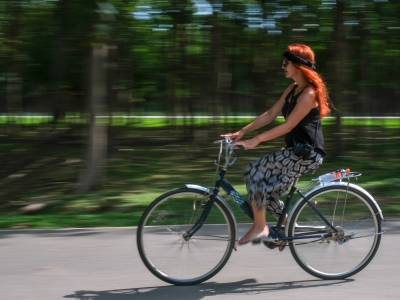How to pack light: Traveling light is the new black
Airlines continue to tighten restrictions on carry-on baggage, and fees for checked luggage are rising astronomically. At the same time, we are increasingly realizing that traveling light not only saves money but also offers greater flexibility and saves time during check-in. Although there is no one-size-fits-all solution for every trip, if you follow a few basic rules and hacks, you’ll find that packing light doesn’t have to be as hard as it seems at first. In this article, we’ll show you how to pack light like a pro.
The benefits of traveling light
Traveling with carry-on luggage offers a number of advantages that can significantly simplify your trip:
- Speed and comfort: With a small bag, you avoid long lines at check-in and waiting for your luggage. Additionally, searching for accommodations, strolling around the city, transfers between transport modes, and time before and after check-out are much easier and more comfortable with a light backpack than with heavy suitcases.
- Money saved: Not only do you save money on checked luggage and excess carry-on fees, but you’ll also save when choosing transportation. With heavy suitcases, you might opt for a taxi. But with a backpack or small carry-on, you’ll be more open to taking the train, bus, tuk-tuk, or moto-taxi.
- Greater flexibility: Spontaneous sightseeing, quick transfers, inpromptu hikes, getting up the stairs, or using public transport are much easier when you’re not dragging excess weight. Traveling light gives you flexibility and better mobility, so you won’t miss out on unique experiences due to logistical concerns.
- Safer travel: Someone with more luggage is a more tempting target for thieves than someone who keeps their bag close. Moreover, more bags mean more items that can be lost or stolen.
- Less stress: Fewer belongings mean fewer worries. You don’t have to worry about losing or damaging your luggage. You won’t stress about how to manage everything while traveling to the hotel or how to pass those four hours between the airport ride and hotel check-out. Even staying within your budget is easier, making your trip more enjoyable.
7 basic rules how to pack light
These seven basic rules for packing light will help you not only reduce the amount of stuff you carry but also maximize the usefulness of what you bring. By following these rules, you can adapt your packing list for all trips.
- Bring only must-have, not nice-to-have
Nervousness and uncertainty before a trip often lead us to pack unnecessary things. Be strict with yourself and only take what is absolutely needed. Think carefully about each item, and if you’re unsure, leave it at home. - Make a list and stick to it
This doesn’t mean copying a generic list from the internet and following it blindly. While it can be a good starting point, tailor it to your needs, limitations, and destination(s). Before packing, lay everything out and review it. I bet you’ll leave a lot of things behind. - Pack multifunctional items and neutral colors
Focus on clothing that is easy to layer, combine, and can serve multiple purposes. Instead of a bulky sweater, opt for a short-sleeve T-shirt that can be paired with a long-sleeve shirt or button-up and topped with a light jacket. Neutral colors like black, white, gray, and navy blue are easy to wear together, giving you outfits for different temperatures and occasions. The same goes for other items – trail shoes instead of heavy hiking boots, 3-in-1 soap, a towel that doubles as a blanket, scarf, or sarong, and so on. - Pack lightweight and quick-drying materials
Compared to cotton, functional fabrics are lighter, crease-free, take up less space, and dry faster. Keep this in mind when packing clothing, shoes, and even towels. Sports towels, like this one, fit in your hand or a pocket and even come with a loop for better hygiene. - Plan for laundry – don’t pack more than for a week
If you’re planning a longer trip, remember that most destinations offer laundry services. Alternatively, pack a solid laundry soap bar that doesn’t take up much space and gives you more flexibility. Pack less and plan to do laundry during the trip.
What to pack when traveling light
With a bit of practice, you can learn how to pack light surprisingly easy. Just follow our 7 rules and create a packing list that you can stick to. Before each trip, familiarize yourself with the your airline specifics and adjust the size, weight, and contents of your luggage accordingly.
Luggage
The first step in preparing for your trip is choosing the right luggage. Whether a backpack or a wheelies, always remember that your bag should be light, compact, and meet the size and weight restrictions set by your airline. Soft bags are typically lighter and more flexible, making it easier to squeeze them into storage spaces or into the airport’s sizing cage. While hard-shell bags offer better protection for fragile items like electronics.
Consider the wheels as well – when they stick out of your bag, they count into the bag size. Your destination and mode of travel play an important role when choosing luggage. A suitcase is not ideal for nature trips or activities like biking or motorbiking, but you’ll likely feel more comfortable with one in a five-star hotel than with a backpack.
Clothing
As a general rule, you can use the 1-2-3-4-5-6 system. One hat, bandana, or cap, two pairs of shoes, three bottom pieces like shorts, pants, leggings, skirts, etc., four tops including T-shirts (short and long-sleeve), shirts, hoodies, and jackets, five pairs of socks, and six pieces of underwear, plus a bra for women. While it may seem minimal, you won’t be going naked to the airport, and everything can be washed.
Consider whether you’ll need a swimsuit, a raincoat, or other special clothing for your destination.
Shoes
Two pairs of shoes usually suffice, and to save space, wear one pair. Trail running shoes are more practical, compact, and versatile than heavy hiking boots. Flip-flops are more practical than heels. Don’t pack new shoes – go for ones that are comfortable and won’t give you blisters. Depending on your destination, decide whether you need formal shoes for the evening or whether one pair will work for the entire trip.
Hygiene and medications
If you’re traveling with carry-on luggage, limit liquids to 100ml and try to find solid, multifunctional alternatives. A solid soap for hair, face, and body will not only save space but also doesn’t count as a liquid. Invest in reusable travel bottles that you can refill with hotel shampoo.
As a basic kit, consider facial cream, 3-in-1 soap, hand sanitizer, a small deodorant, travel toothpaste and toothbrush, a small hair product, personal medications, and a compact towel. Depending on the destination, you might also want to pack insect repellent or sunscreen.
Technology
If photography isn’t your pasion or a job, consider leaving your digital camera at home and just taking a phone. This will save space, weight, and reduce the number of valuables that could be lost or damaged. The same applies to laptops.
The essentials for any trip are your phone, charger, and a universal power adapter. Men may want to pack a shaver. Headphones and a power bank can be handy for long trips without electricity or for noisy public transport. Download guides, books, maps, and other necessary apps on your phone to save more space.
Documents
Travel documents and reservations, visas, passports, money, travel insurance, and a no-fee credit card, plus one extra in case of emergency. Always keep all documents with you, and never leave them in your checked luggage. And don’t forget that some destinations may require proof of vaccinations. It is also a good idea to keep an electronic copy handy in your email in case paper gets lost.
Other Items
- Ultralight water bottle: Fill it up after security checks at the airport from drinking fountains or in your hotel.
- Dry bag: If you plan to be near water, pack a waterproof bag to keep your documents and phone dry. After a swim, you can store your wet clothes in it before drying them.
- Snorkel or other gear: Depending on the destination.
- Toys for kids: Choose a few small, compact toys to keep them entertained. A notebook, coloring books, crayons, or sticker books are great for long flights and train rides.
- First-aid kit: Aside from prescription meds, you might need band-aids, anti-diarrheal tablets, and other essentials depending on the destination. Carefully consider whether you need a first-aid kit – hotels are equipped, and pharmacies are often nearby.
Conclusion
Traveling light, whether with just a carry-on or checked luggage, is not only kind to your wallet but also gives you flexibility and reduces stress. How many times have you packed a full suitcase only to use few favourite things? With our basic guide to how to pack light, you too can travel like a pro.







Leave a Reply